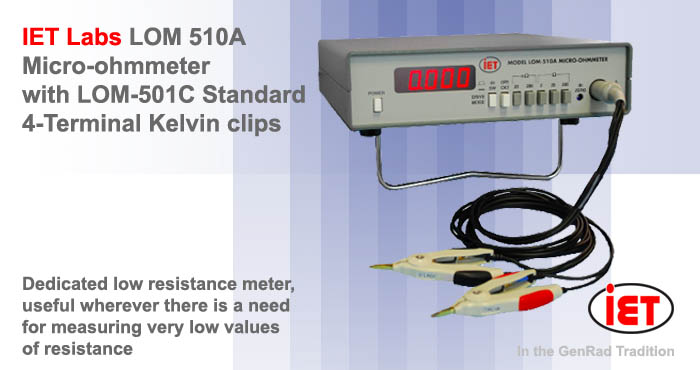High-accuracy measurement of low resistance values
If high-accuracy measurement is needed for low resistance values, traditional multimeters should be replaced with other type of instruments and measurement principles.

The easiest way to eliminate the inaccuracy of 2-wire measurement principle used by multimeters, where the resistances of measuring leads and connections are added (via cascade connection) to the resistance to be measured, is to use the 4-wire Kelvin measurement principle.
The essence of the principle is that the testing current generated by the instrument is conducted via the measured resistance using a separate pair of wires (I+/I-) while voltage drop on the resistance is measured by another pair of wires (U+/U-) thus eliminating the resistance generated by the measurement wires. Using Ohm's law (R=U/I), the resistance value is obtained by dividing the measured voltage drop by the applied testing current.
This principle is used by today's modern digital milliohm and microohm instruments with a measuring limit, resolution and accuracy generally suitable for industrial use. A Kelvin clip, spring-loaded probes or special part clamps may be connected to the 4 connecting points (I+,I-,U+,U-) on the instrument which may be either 4 pcs of 4mm banana socket, 4 pcs of BNC socket or any type of multi-pole connector.
